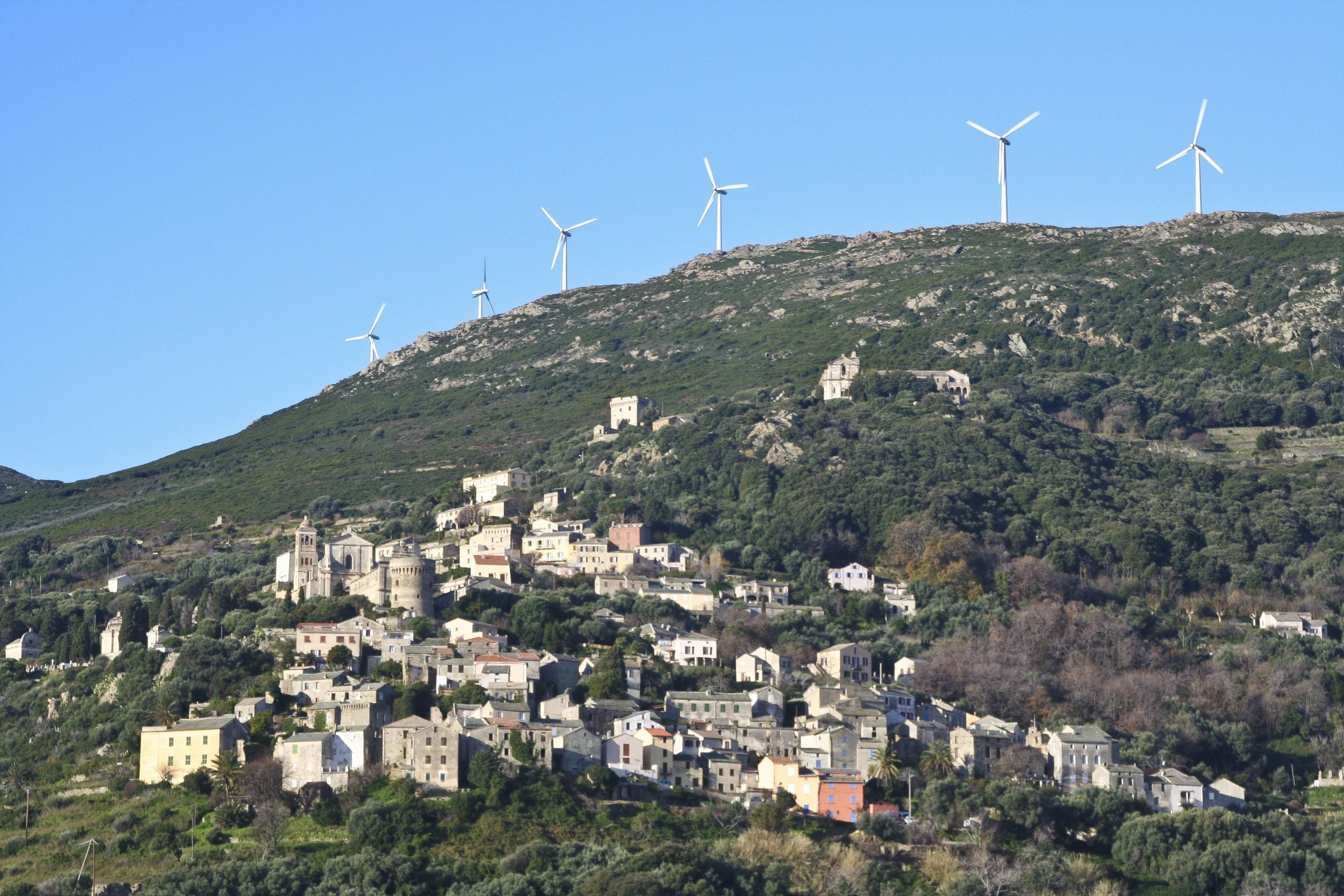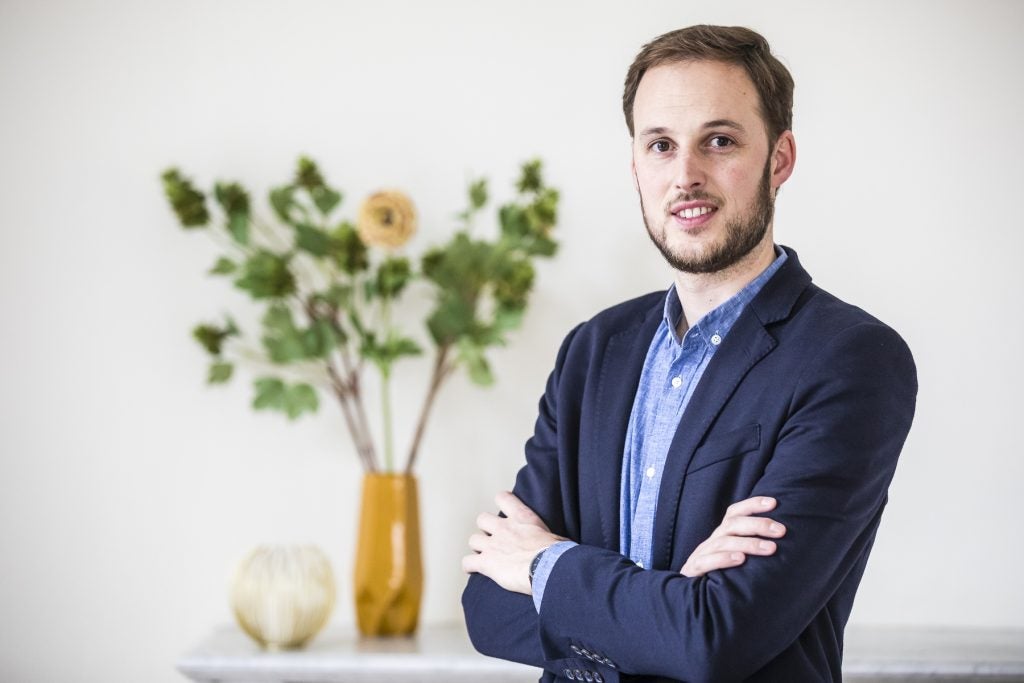
While the project to decarbonise the world’s industries and shift our energy infrastructure is one that affects all people, the fact remains that, for the most part, it is the world’s wealthiest people and companies that are influencing the future of the world’s energy mix.
This is not necessarily a disadvantage, but there is a disconnect between the handful of people able to make million-dollar decisions and the millions of people who will be affected by them; Danish company Ørsted, long held up as the model of transitioning to clean energy amid uncertain economic times, remains a massive private enterprise, with a market capitalisation of around $53bn. Questions remain, therefore, if these companies are willing, or even able, to consider the impacts of their energy policies and investments on the individual people who will be most affected by sweeping changes to power infrastructure.
In response, a new form of community ownership is taking root in France. Organised by energy company BayWa r.e., the Clos Neuf wind farm in Brittany is a 12MW renewable power project, driven by a $1.04m (€1m) investment by local residents. These citizens – two-thirds of whom live within 10km of the project – have committed around $500,000 as shareholders, and the other half as bondholders.The combination of the scale of this investment, and the involvement of such local people, could set a new precedent for the balance of power in the clean energy industry.
Yet the allure of this new way of working also brings a great challenge: there is no framework for community-driven renewable power on a large scale. With BayWa r.e. eager to expand its work in France, or use the lessons learned at the Clos Neuf project to inform future projects, it remains to be seen if and how these locally-owned renewables have a place on the world stage.
Community involvement – a blueprint for future renewables?
“Local communities must not only be involved with a project and informed about it from the very beginning – they must also be recognised as a real stakeholder,” explains Corentin Sivy, head of wind development and acquisition, BayWa r.e. France. “This means that they also might want to see a real benefit, in our case a share of the project’s ownership.”

This emphasis on local involvement is evident throughout the project. In addition to the financial backing provided by local people, citizens are able to take part in discussions regarding the signing of contracts, and two people are elected to sit on the project’s strategic committee. There is optimism, therefore, that local people will not only be a source of initial funding, but that their needs and interests will be represented in the long-term future of the project, potentially creating not just a single wind facility, but an entire local energy grid driven by community interest.
Indeed, BayWa r.e.’s work in Brittany could be described as holistic, with local people and groups involved in making decisions across a broad range of aspects of the facility, which Sivy was eager to highlight.
“Since the project was first approved by the municipal council seven years ago, we have met with locals and their elected representatives more than 40 times,” explains Sivy. “During these meetings, we talked with them about the progress of the project, listened to their opinions, and discussed them at length. We also held regular information sessions to keep them informed about new developments and the progress of the project.”
This back-and-forth approach also sets the Clos Neuf project apart from other locally-owned renewable projects. The Community Owned Renewable Energy (CORE) project in the UK, a similar scheme that will invest $48.4m (£40m) into wind farms, and then allow local groups to purchase the facilities once production begins, separates the life cycle of the project into two phases, an early phase where the investors can determine the fate of the project, and a later phase where locals gain control.
BayWa r.e.’s consistent commitment to community decision-making is the opposite of this setup – and perhaps explains the smaller total investment into its project than the CORE project in the UK – but could ultimately prove to be a more effective blueprint for long-term community-owned energy.
“As much transparency as possible”
Despite the company’s voiced commitment to local autonomy, this is not to say that BayWa r.e. is turning the project over to local citizens entirely. The four-turbine project will also be backed by the Banque des Territoires and renewables company Quénéa, and the success of the project may well depend on how effectively the priorities of these broadly aligned, but ultimately disparate, stakeholders can be balanced.
For its part, BayWa r.e. is eager to stick to the principles that have built the project up to this point, most notably its interest in working with other organisations as frequently as possible.
“With the development phase of the project now being finished, we will continue to listen to the community during the operational phase as well,” says Sivy. “We want to bring as much transparency as possible to the region and further build our network of local connections thanks to our citizen shareholders. To maintain a regular exchange, we will organise meetings twice a year.”
This idea has been echoed by senior figures across the company. Announcing the start of operations at the wind farm BayWa r.e. global director of wind projects Lorenzo Palombi explained: “A renewable energy project presents change, but beyond socio-economic benefits, it also drives a new momentum to communities and creates the dynamic we need for a more sustainable and better future for us all.”
Looking ahead, Sivy is optimistic that the project could prove to be something of a proof of concept for the idea, and could lead to larger-scale investments in the future.
“We signed a partnership with the Banque des Territoires in 2019 for 50MW of wind projects,” says Sivy. “The goal is to enable local stakeholders to access the capital of the wind project with a part of local governance, alongside the Banque des Territoires as a minority shareholder.
“Therefore, our ambition is to multiply operations such as Clos Neuf for all of our wind projects. This will probably take different forms in each region, since each project is different.”
Scaling and replicating community wind ownership
When asked about challenges that the company had encountered as part of the project so far, Sivy notes that “[the company has] not encountered any problems during the development or the construction of this project,” a show of confidence in the project in its current state. However, this will do little to allay fears of logistical challenges that are likely to arise when moving from a 12MW project to ones totalling 50MW.
Whether these pertain to licensing and securing viable land, or constructing farms in new parts of the world, or even balancing particular community needs with local geographic conditions, the truth remains that, as the Clos Neuf facility is one-of-a-kind, the company will be heading into uncharted waters as it looks to scale the project.
Yet the potential economic growth of such investments is not to be dismissed, and the allure of expanding renewable infrastructure and generating income in a world increasingly reliant on clean power sources could help encourage investment in the company’s future projects.
These potential economic benefits are significant, as this trend mirrors a recent trend in wealthy companies across sectors, were strong environmental, social and governance (ESG) performances translates to strong economic performances. Across a range of industries, challenges such as protecting local environments or involving people in the decision-making processes have typically been considered antithetical to the efficiency maximising of profits, but recent research shows the opposite to be true.
A 2020 report from the NYU Stern Center for Sustainable Business and Rockefeller Asset Management opens that there are well-established “positive correlations between ESG performance and operational efficiencies”, and both the people and companies involved in the Clos Neuf project will be optimistic that the involvement of locals in the decision-making processes will yield similar financial results.



